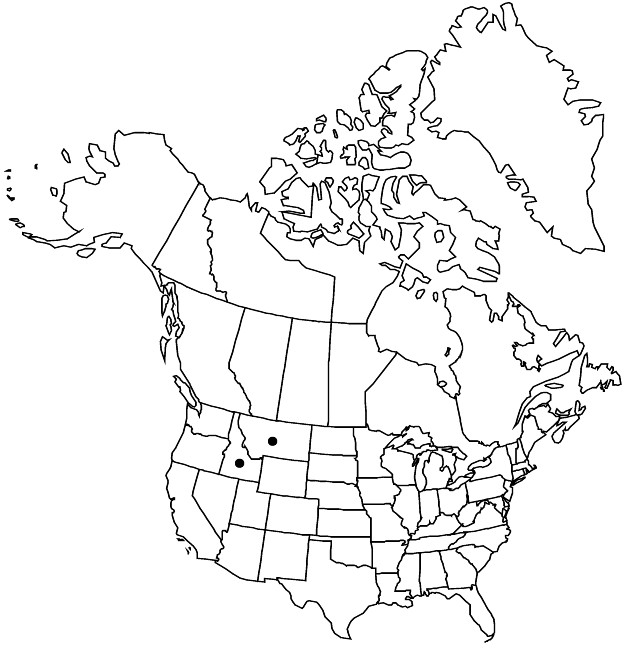Eriogonum soliceps
Brittonia 56: 296, fig. 1. 2004.
Herbs, matted, not scapose, (0.02–)0.04–0.06(–0.08) × (0.5–)1–3(–4.5) dm, tomentose, grayish. Stems spreading, with persistent leaf bases, up to 1/8 height of plant; caudex stems matted; aerial flowering stems absent. Leaves basal, fasciculate in terminal tufts; petiole 0.1–0.3 cm, tomentose; blade narrowly spatulate, 0.4–0.8 × (0.15–)0.2–0.4 cm, densely grayish-white-tomentose on both surfaces, margins plane. Inflorescences capitate, 0.5–0.9 cm; branches absent; bracts absent. Peduncles erect, (1.5–)3–5(–7) cm, thinly tomentose, arising directly from caudices. Involucres 1 per node, turbinate to turbinate-campanulate, 2–3 × 1.5–2(–2.5) mm, rigid, thinly tomentose; teeth 5, erect, 0.4–0.6 mm. Flowers 2–3.5(–4) mm; perianth white, glabrous, pustulose; tepals connate proximal 1/5, slightly dimorphic, those of outer whorl oblong, those of inner whorl oblong-oblanceolate; stamens slightly exserted, 2–3 mm; filaments pilose proximally. Achenes light brown, 2.5–3.5 mm, glabrous except for slightly papillose beak.
Phenology: Flowering Jul–Aug.
Habitat: Gravelly soil, sagebrush communities
Elevation: 2500-2600 m
Discussion
Of conservation concern.
Eriogonum soliceps occurs in the Beaverhead Mountains that border Lemhi County, Idaho, and Beaverhead County, Montana. Elsewhere in Beaverhead County the species is found in the Tendoy Mountains, and in the Cedar Pass and Bannack areas. Otherwise the Railroad Canyon wild buckwheat is known from Chalk Bluffs northeast of Wisdow in Deer Lodge County, and from an unknown location in the “mountains south of Virginia City” in Madison County, Montana. It may be quickly distinguished from E. mancum by its reduced inflorescence composed of a single, upright peduncle bearing a solitary involucre.
Selected References
None.
